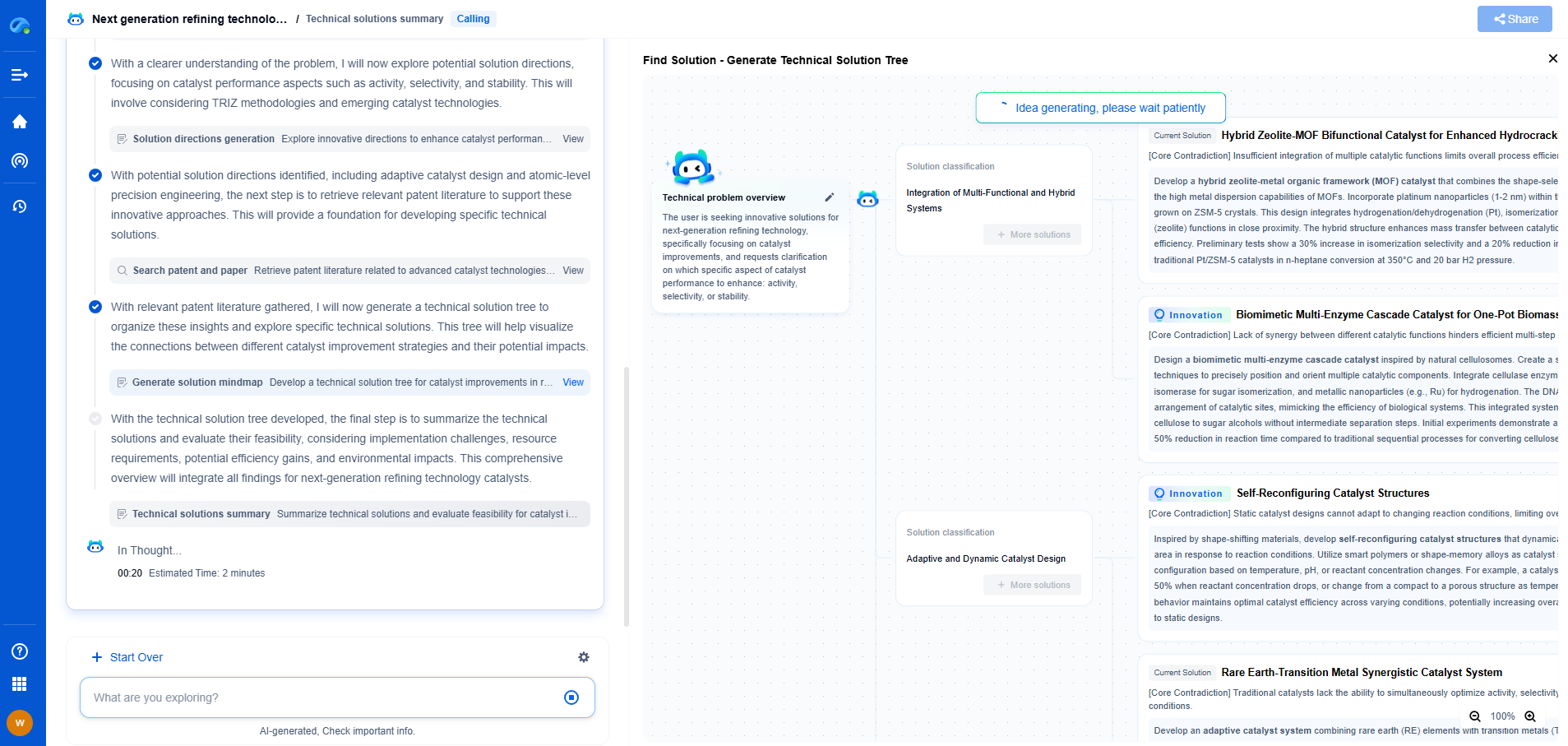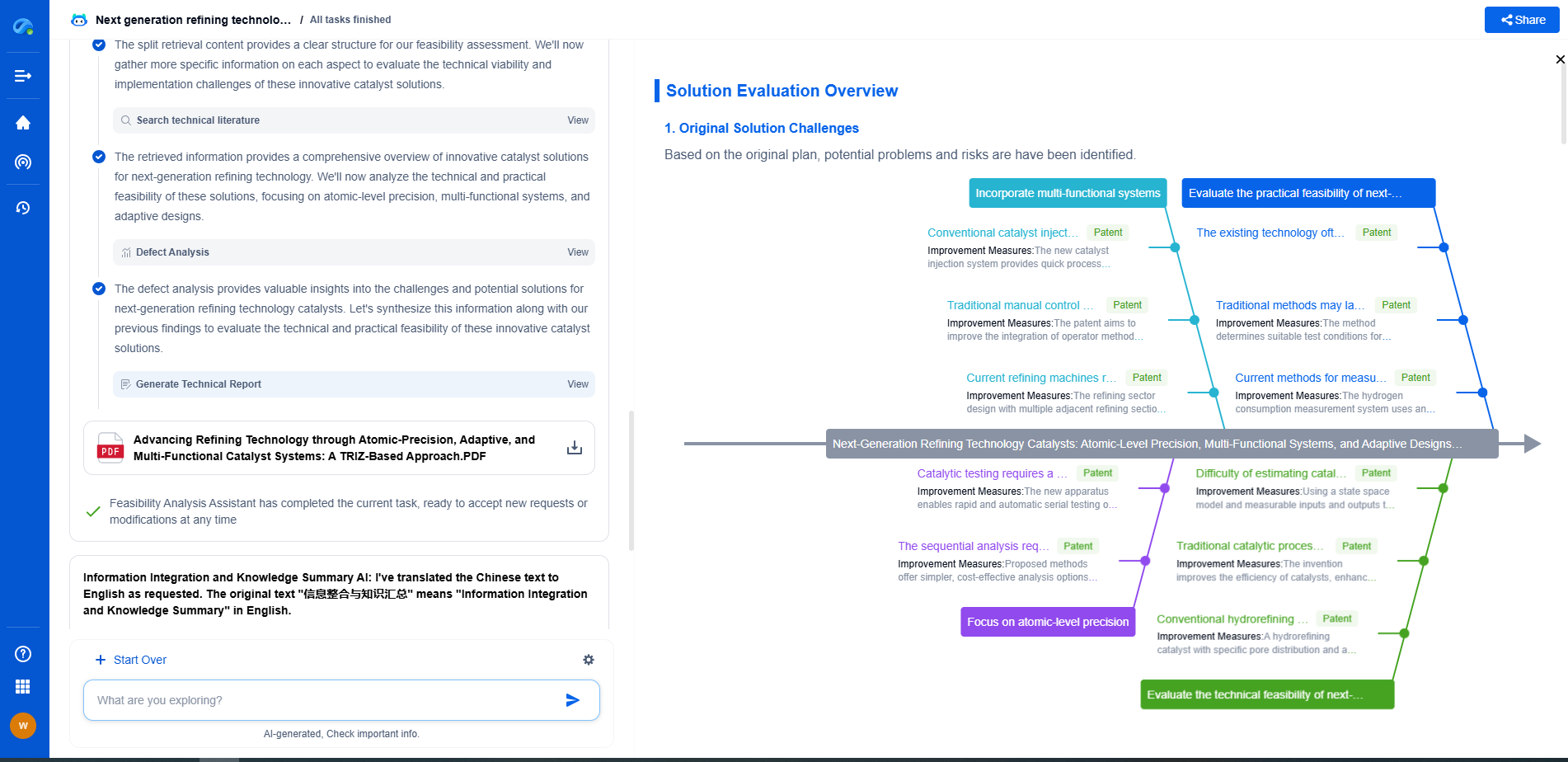Eddy Current Testing Explained: How It Detects Cracks and Flaws in Conductive Materials
JUL 9, 2025 |
Eddy Current Testing (ECT) is a non-destructive testing technique widely used in various industries to identify surface and sub-surface flaws in conductive materials. This method is particularly valued for its ability to detect minute cracks, corrosion, and other defects without causing any damage to the test object. Its application spans across sectors like aerospace, automotive, and manufacturing, where material integrity is crucial for safety and performance.
How Eddy Current Testing Works
The basic principle of ECT revolves around electromagnetic induction. When an alternating current flows through a coil, it generates a changing magnetic field. If this coil is brought near a conductive material, the magnetic field induces swirling currents, known as eddy currents, in the material's surface. These eddy currents create their own magnetic field, which interacts with the original field in the coil.
Any defects in the material, such as cracks or inclusions, disrupt the flow of eddy currents. This disruption changes the impedance of the coil, which can be measured and analyzed to identify the presence and characteristics of flaws in the material. The ability to detect variations in impedance is what makes ECT a powerful tool for inspecting conductive materials.
Key Components of an Eddy Current Testing System
A typical ECT system comprises several key components: an eddy current probe, an instrumentation unit, and a display or recording device. The probe contains the coil that produces the magnetic field and detects changes in impedance. The instrumentation unit processes the signals received from the probe and converts them into readable data. Finally, the display or recording device presents the data in a form that technicians can interpret.
The probes come in various shapes and sizes, depending on the application and the type of material being tested. These include pencil probes for small, hard-to-reach areas, and split D-probes for the inspection of tubing and pipes. The choice of probe is crucial for the accuracy and effectiveness of the testing process.
Advantages of Eddy Current Testing
One of the most significant advantages of ECT is its non-contact nature, allowing for rapid inspection without the need for direct contact with the material. This makes it an ideal choice for inspecting delicate or sensitive components that could be damaged by other testing methods. Additionally, ECT is highly sensitive to small surface cracks, offering a reliable means of detecting early-stage defects before they become critical.
ECT is also versatile, capable of testing a wide range of materials, including aluminum, copper, and stainless steel. It can be employed on both flat and curved surfaces, making it suitable for complex geometries. Moreover, ECT can be performed through coatings and paint, eliminating the need for surface preparation in many cases.
Limitations of Eddy Current Testing
Despite its many advantages, ECT does have some limitations. It is primarily effective on conductive materials, restricting its use on non-conductive substrates like plastics or ceramics. The depth of penetration is limited, making it less effective for detecting deep-seated flaws. Additionally, ECT requires skilled technicians to interpret the results accurately, as the presence of multiple factors can affect the readings.
Real-World Applications of Eddy Current Testing
ECT is employed across various industries for quality control and maintenance purposes. In the aerospace sector, it is used to inspect aircraft components like wings, fuselage, and engines, ensuring that they remain free from cracks and corrosion. In the automotive industry, ECT helps maintain the integrity of engine blocks, wheels, and suspension components. The manufacturing industry uses ECT to detect defects in production lines, improving product quality and reducing waste.
Conclusion
Eddy Current Testing is an indispensable tool in the arsenal of non-destructive testing methods. Its ability to detect surface and sub-surface flaws in conductive materials with precision makes it an invaluable asset across many industries. While it has its limitations, the benefits it offers in terms of safety, efficiency, and cost-effectiveness cannot be overstated. As technology advances, ECT continues to evolve, further enhancing its capabilities and applications in ensuring the reliability and integrity of critical components.
Navigating the evolving world of electrical measurement—from high-precision signal integrity to advanced test protocols like BERT or TDR—demands more than just expertise; it demands smart tools.
Patsnap Eureka empowers you to keep up—by turning complex patent data, technical parameters, and industry signals into actionable insight. It’s your AI partner for exploring what’s next in test, measurement, and electrical diagnostics.
💡 Try Patsnap Eureka for free and see how it transforms the way you work with electrical measurement technologies.
- R&D
- Intellectual Property
- Life Sciences
- Materials
- Tech Scout
- Unparalleled Data Quality
- Higher Quality Content
- 60% Fewer Hallucinations
Browse by: Latest US Patents, China's latest patents, Technical Efficacy Thesaurus, Application Domain, Technology Topic, Popular Technical Reports.
© 2025 PatSnap. All rights reserved.Legal|Privacy policy|Modern Slavery Act Transparency Statement|Sitemap|About US| Contact US: help@patsnap.com

